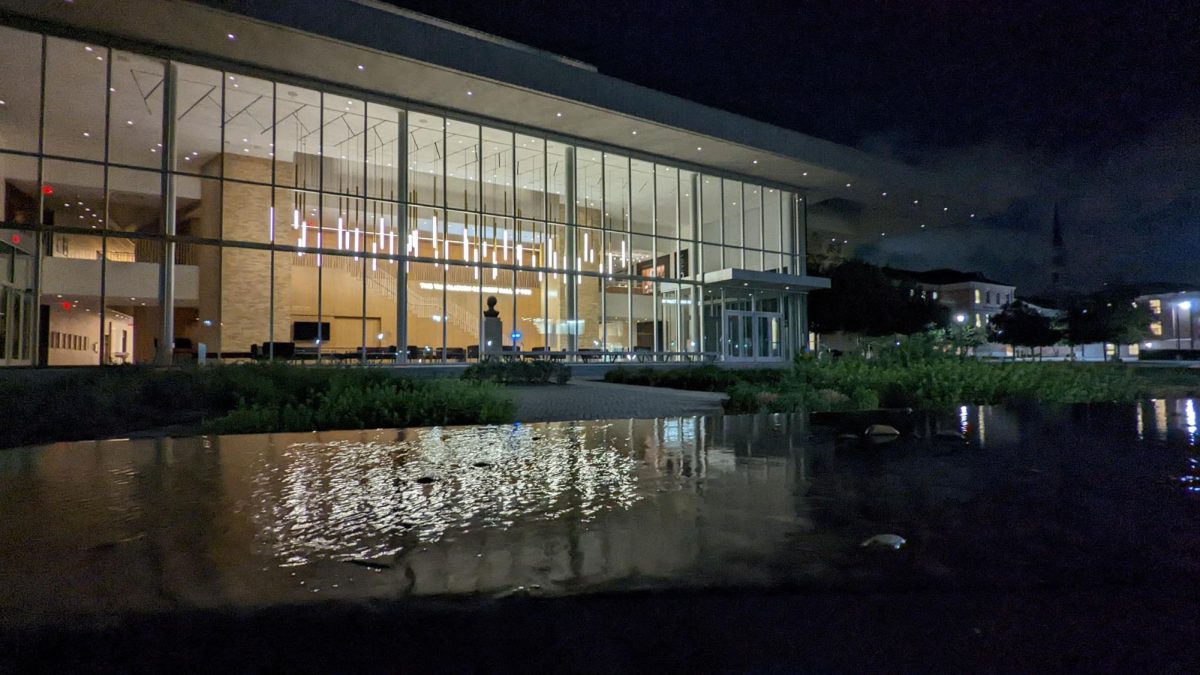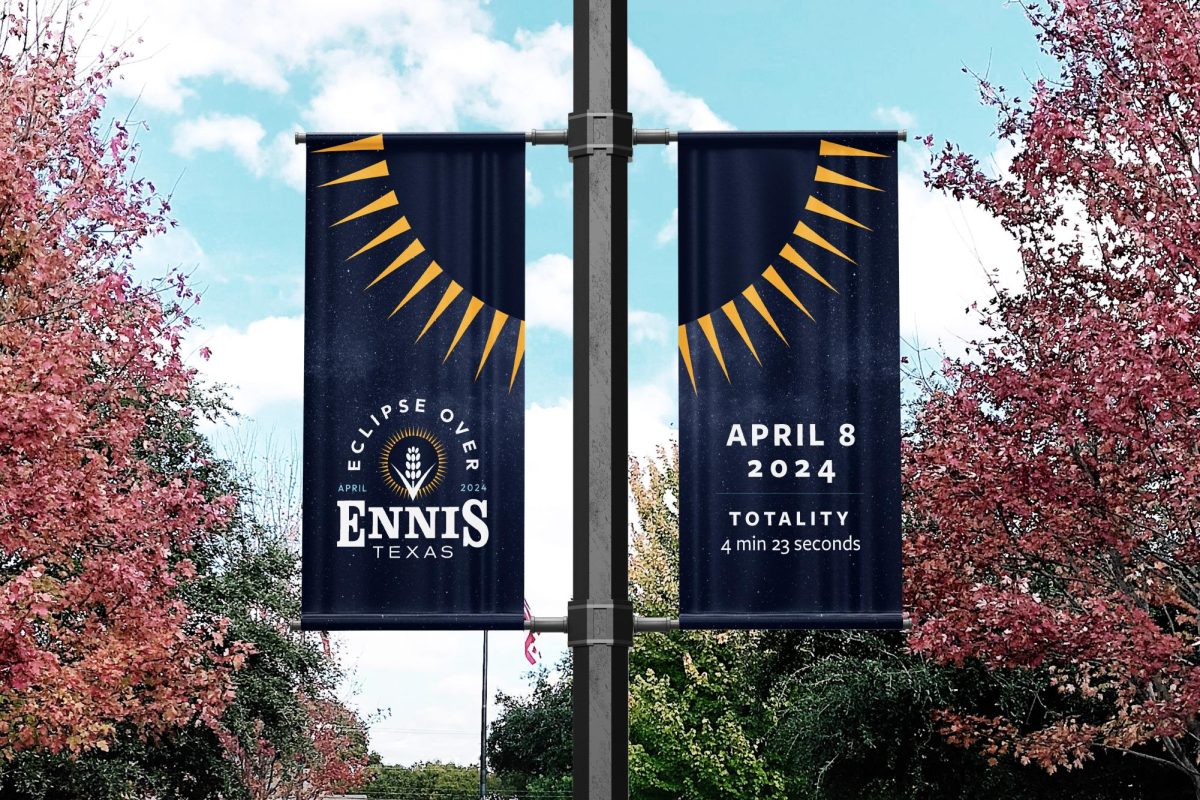Homeowners who live near TCU’s campus are divided over housing developments for students. Some want to sell their homes for a profit and move out. Others want to stay put – and they don’t want more apartments in their neighborhood.
The development of housing built mainly for students is becoming more common in the 109, especially in areas near TCU. Neighborhoods are seeing a change from traditional single-family style homes to new complexes, duplexes and town homes for students.
University officials say TCU will continue to build more residence halls and hopes to house all students on campus in the coming years. And that may mean a surplus of off-campus housing.
As TCU’s student population grows, so does off-campus housing targeted toward students. TCU has grown from about 8,000 students in 2000 to almost 10,000 today. The university will be able to accommodate about 4,050 students in its residence halls in the fall 2014 semester.
Frisco Heights neighborhood
Frisco Heights resident Tim Kuchta has watched new development change his neighborhood, and he said he supports the construction of student-style housing in the area.
Kuchta has lived on Merida Avenue for 15 years. Now, he said he is one of the few homeowners still living in the neighborhood.
Kuchta also lived in Frisco Heights when he was a TCU student in the 1980s. He said he has noticed that the traditional, family-oriented feel of the neighborhood has disappeared as houses have been passed through the hands of family members to renters and then to developers.
“I recognize that Frisco Heights, as a neighborhood, is coming to an end,” Kuchta said.
He said he expects the entire neighborhood to soon be owned by TCU and larger developers for student housing.
Kuchta said he is not sentimentally attached to his house. He said he sees the change in the neighborhood as an investment opportunity.
He said he is trying to start an auction for those who want to sell their property by getting TCU and other developers to bid against each other. Kuchta is also trying to gain the support of fellow residents before he contacts TCU and developers.
Paschal neighborhood
Other 109ers, like some in Paschal’s neighborhood, are not as supportive of the influx of students into their neighborhoods.
The secretary of the Paschal Neighborhood Association, George Jensen, said that developers are not following the code in place for new development. He also said he believes the city is not enforcing, and he has an issue with the city not enforcing the code.
The zoning code for Paschal’s neighborhood calls for a maximum of five unrelated people to live in a single-style family residence, he said. But Jensen said he noticed that the new complexes being built are advertising for six-bedroom units.
“The city just needs to enforce the code requirements that they have,” he said.
Fort Worth’s Zoning Ordinance website states there are enforcement methods including fines and additional remedies for violations.
Overcrowded parking and a clash of lifestyles present problems in the neighborhood, he said. Jensen woke up to find seven cars parked in front his house last week, he said, and a party next door recently lasted until 3 a.m.
Jensen said he thinks the lack of housing for TCU students is triggering oversized development in surrounding neighborhoods.
He said he believes developers should build housing that can be suited for people other than college students.
Jensen said he is concerned that TCU will build enough dorms on campus to fill the demand.
The new housing should be built in a way that families would be appealed to live in them, if students don’t fill up the space, he said.
Bluebonnet Hills neighborhood
Some residents of Bluebonnet Hills are also concerned about the risks of having new developments suitable only for student-style living.
Martha Jones, vice president of the Bluebonnet Hills Neighborhood Association, who has lived in her home since 1988, said she is currently concerned with what will happen to some of the properties in her neighborhood.
She said a developer wants to demolish a strip of homes in the 3200 block of South University Drive to build a 175-unit apartment complex oriented toward student-style living.
She said she would rather have five bedroom houses on that strip than a three-story, 175-bedroom apartment complex.
“I can’t imagine any adult who would want to live in a complex like that with a bunch of students,” she said.
Jones said her neighborhood is designated as urban residential zoning, which allows more “dense” homes to be built, in contrast to traditional single-family-style homes. This zoning would allow town homes to be built, which would maintain the urban village feel of the neighborhood, she said.
According to the Berry/University Village master plan, the village boundary “roughly incorporates the commercial properties on the north and south sides of Berry Street, and it generally bounded by Bowie Street on the north, Devitt Street on the south, Rogers Avenue on the west and Forest Park Avenue on the east.”
Some of the residents in her neighborhood are fighting against Ojala Holdings requested zoning change from “C” medium density multifamily to “UR” lhigh-density urban residential zoning in order to get the approval needed to build the apartment complex, she said.
Matt Vruggink of Ojala Holdings said Ojala proposed the apartment complex plan under the urban residential code and claims it fits under the qualifications currently in place.
He said he feels there’s a demand for apartment housing geared to attract young professionals and students as cliental because of the proximity to TCU and Berry Street.
But Vruggink said he thinks the objections made to the complex have to do with the level of density being proposed with the complex.
Urban residential zoning ranges from a town home to manner house. Jones said the developer is creating something that fits under the urban residential classification, but it’s not consistent with what was envisioned with the Urban Village plan for Bluebonnet Hills.
“[The Bluebonnet Hills neighborhood] worked really hard to come up with long- range plan and we want the City Council and the Zoning Commission to support that,” Jones said.
If the apartment complex is built, the neighborhood will become a “cut-through” and a “parking lot,” which would create congestion and noise, she said.
She said some of her neighbors stated they would move out of the neighborhood if the complex were built because of the traffic and the noise.
She said she wants developers to follow the Berry/University Village plan. The plan states that the corridor of South University Drive is zoned residential. Buildings like the GrandMarc located in the 2800 block of West Bowie Street, one block off South University Drive, would be inappropriate unless they were located within a commercial corridor, she said.
“Personally, I think it’s really sad that these developers are coming in and tearing down these really cute bungalows and building these monstrosities that don’t match with the neighborhood, she said, “I think what we are seeing is that we are losing the charm of TCU.”
But Vruggink said “We are excited about the area and look forward to reaching some sort of compromise so we can deliver a great product to the neighborhood.”
Rental properties
Jesse Cockrell, who manages three rental properties in Frisco Heights, recently demolished a traditional two-bedroom home to build a duplex for student living.
Cockrell said he supports new student housing in the area and sees it as a natural process.
He said he wants to give people and students what they want: comfort, space, private bathrooms and bigger closets.
Like Jensen, he said the new developments have been encouraged by the demand TCU has created. He said students want to move away from dorm life and have a place of their own.
A developer’s perspective
Village East,developer Bill Newsome said he has also seen a need for safe, well lit, quality living for students within a few blocks from campus.
He said the Village East has either existing locations or ones in construction around Frisco Heights, including locations off Sandage Avenue, Merida Avenue, Lubbock Avenue and McCart Avenue. The units vary from two to five bedrooms.
Most of the properties he has torn down to build the new structures were investor-owned, Newsome said.
“We bought old blighted, substandard houses, and we replaced them with state-of-the-art, nice, new houses.”
Unlike Jensen, Newsome said he thinks neighborhoods are happy with their efforts because they are keeping parking off the streets by providing spaces for each resident.
He said that although some of the pre-existing Village East residences have five bedrooms, the new duplexes and town homes under construction are oriented towards smaller units with two to three bedrooms.
“We have, in my opinion, improved the neighborhood,” he said.
TCU’s residential situation
The director of housing & residence life at TCU, Craig Allen, said that over the next three to five years TCU will gain more capacity to house students on campus.
About 2,500 students went through a lottery process for on-campus housing in the fall 2014 semester, Allen said. And of those 2,500, TCU will place between 2,100 to 2,300 students in residence halls.
Right now, the demand for on-campus living is 300 to 400 students, and he said “TCU will be building for a number of years until we meet that demand.”
Allen said he agrees with Jensen’s and Jones’ concerns that the new property developments will soon no longer serve as housing for students because TCU will fill that demand.
He said with the increase in numbers of students for on-campus living, more students will be taken out of the off-campus market which will leave developers with more competition to fill the spaces.
TCU will soon have enough housing availability to accommodate students wanting to live on campus, Allen said. There will be an excessive number of town houses and apartments with not enough students to fill them because TCU keeps building residential space on-campus, he said.
Allen said as the university continues to build residence halls, it is “not only fulfilling demand, but creating demand.” More students will want to live on campus and eventually, even juniors and seniors will expect on-campus housing, he said.
“At some point, these builders and developers are going to have to figure out who exactly are they building for, because it won’t be for students — there won’t be enough them to fill all these spaces,” he said.





